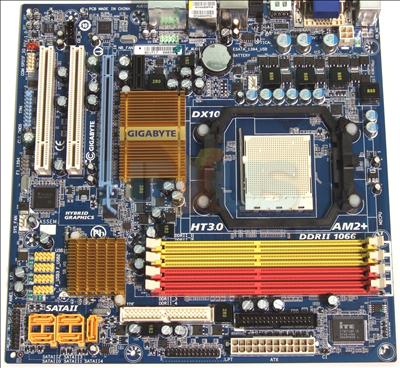Introduction
The 780G is a chipset that purports to do it all, that is, offer compelling graphics' performance and excellent connectivity in one (relatively) low-cost motherboard that usurps the already-excellent 690G chipset released just over a year ago.
We'll examine why 780G is important for AMD's fortunes and how it integrates the world's first fully-functioning DX10 IGP into the northbridge.....but that would be spilling the beans, wouldn't it?
Integrated Radeon HD 3200
With the rather large proviso that we're basing our summary on paper
specifications, AMD's 780G expands on the 690G's feature-set in a
number of ways. The most compelling enhancements centre
around
the integrated Radeon HD 3200 graphics, which provide DX10-class
compliance needed to run all the latest games.
Please, please note that whilst it is, on paper, comfortably faster and
more feature-rich than any IGP that has gone before it, a £50
discrete card will run frame-rate rings around it - it's designed as a
graphics core for the casual gamer who wants to play new-ish games at
1,024x768 with low-to-medium image-quality settings.
It should,
however, provide perfect rendering without blemishes common to Intel's
G-series IGPs. AMD 780G, too, can be coupled with a discrete Radeon HD
3400 card for Hybrid CrossFire.
Native display outputs are better than the competition's - be it NVIDIA
or Intel's, and we can see a mATX-sized 780G board coupled with a
low-power, dual-core Athlon 64 CPU as eminently sensible choices for
an HTPC.
The bad? We guess it's the continuing fight against competitors whose
marketing budgets are larger. AMD really, really needs to have the 780G
in £399/$599 system-integrator boxes from all and sundry.
Let's see if 780G can fulfill its on-paper potential as we take a look
at Gigabyte's GA-MA78M-S2H and further evaluate the Hybrid CrossFire
and high-definition video-decode propositions.










